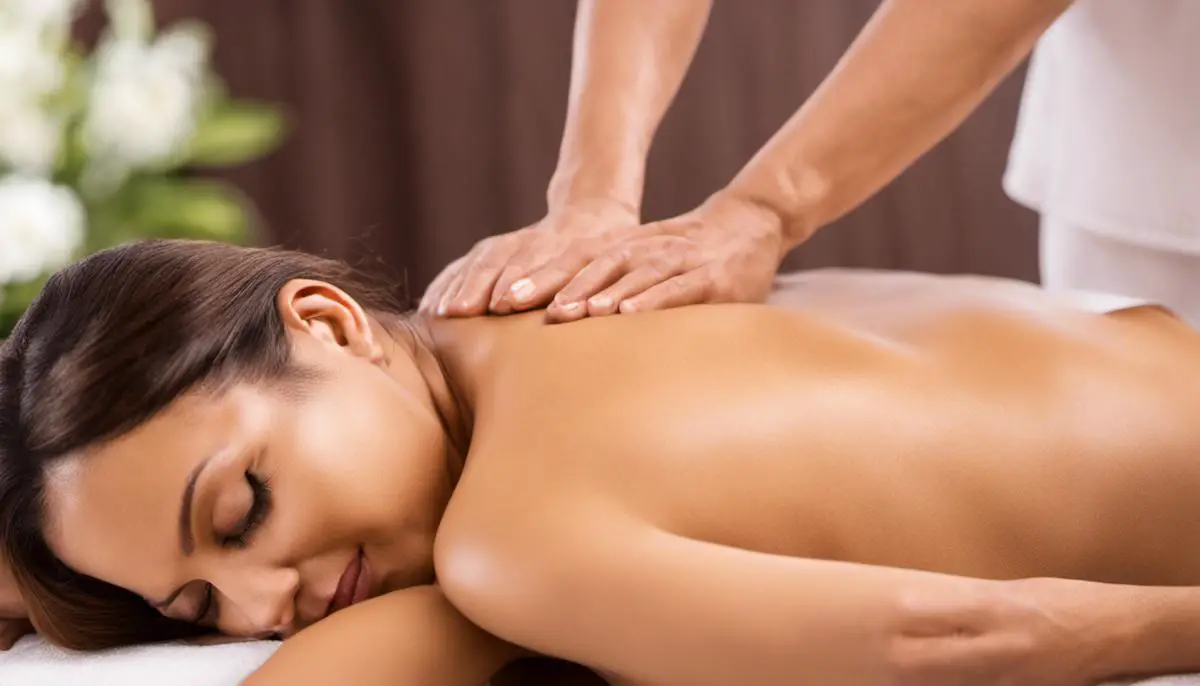Period pain, a common phenomenon experienced by many women worldwide, often triggers a dreadful anticipation every month. While some women experience a mild discomfort, for others it can be excruciating and debilitating. Diverse levels of period pains can be attributed to numerous factors including genetics and individual anatomy. Therefore, there is a need for various methods to manage and alleviate this discomfort. This exploration takes an in-depth look into one such non-pharmaceutical remedy, belly massage, which holds the potential to provide relief from period pain. Delving into the nuances of female reproductive anatomy and the physiology of menstruation, we set out to understand how and why massage techniques can be beneficial, before elucidating the techniques themselves and providing handy tips to ensure safe and effective practice.
Understanding Period Pain
Understanding Period Pain: Causes and Symptoms
Period pain, also known as dysmenorrhea, usually involves pelvic and abdominal cramps. These cramps can start a day or two before the period and can last for several days. The primary cause of these pains is the shedding of the inner lining of the uterus during the menstrual cycle. This shedding is prompted by the release of hormone-like substances called prostaglandins, which are associated with pain and inflammation.
The severity of the pain varies among women. Some may only feel slight discomfort, while others experience severe, debilitating pain. Higher levels of prostaglandins are associated with more severe menstrual cramps. Other factors that might contribute to severe pain include uterine fibroids, endometriosis, pelvic inflammatory disease, cervical stenosis or the use of a birth control device like an IUD.
Why Some Women Experience More Severe Pain Than Others
Higher levels of prostaglandins can make menstrual cramps more severe. Researchers have found that women who have high prostaglandin levels experience more intense contractions of the uterus. Conditions such as endometriosis, uterine fibroids, and pelvic inflammatory disease can also cause more severe cramps.
Factors such as age and childbirth can also affect the pain one experiences. Younger women tend to experience more severe menstrual cramps than older women, and women who haven’t given birth may experience more menstrual pain.
Non-Pharmaceutical Methods to Alleviate Discomfort: Massage
Massage techniques can be an effective non-pharmaceutical method to alleviate menstrual discomfort. Abdominal self-massage performed daily for weeks leading to menstruation can help reduce the intensity and duration of cramps.
Here is a simple technique: Lie down comfortably and apply a warm oil on your lower abdomen. Using your fingers, gently apply pressure starting below the navel and then move to the lower waist area. Use a circular motion and gradually cover the entire area above your pubic bone. After five minutes, move your hands towards your sides and massage. This should be repeated at least once a day.
Scientific Research Supporting Massage for Period Pain
Research has supported the use of massage to manage period pain. A study published in the Journal of Obstetrics and Gynaecology Research found that women who used a specific abdominal and pelvic massage technique experienced less pain during their period and needed fewer painkillers.
In another study, researchers found that aromatherapy massage on the lower abdomen could reduce the severity of pain and excessive bleeding in primary dysmenorrhea. Essential oils such as lavender, rose, and clary sage were found to be beneficial.
Keep in mind, while massage is generally safe, it may not be suitable for everyone, especially those with certain health conditions. Always seek the advice of a healthcare provider before starting any new treatment for period pain.
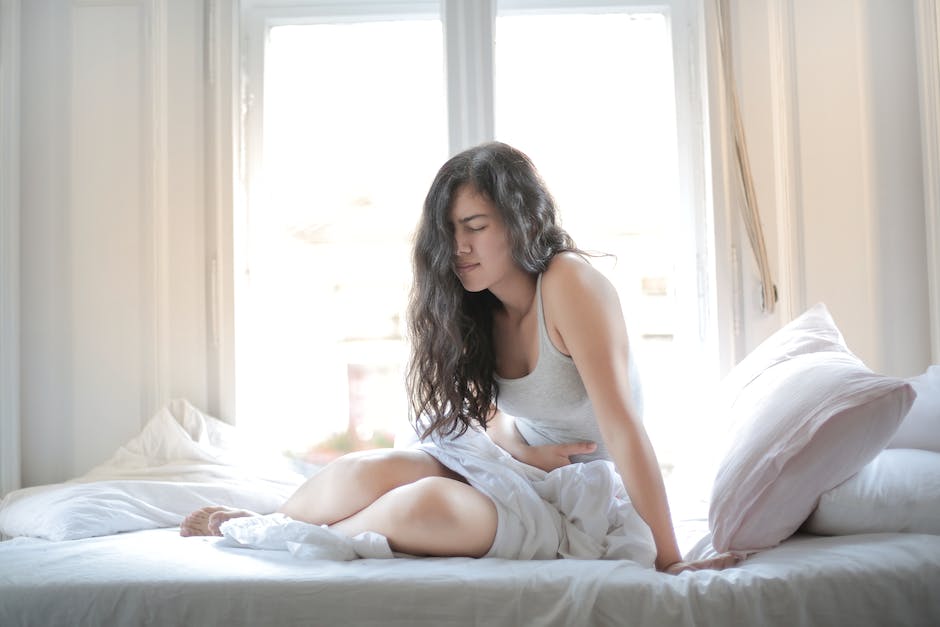
Anatomy and Physiology
Understanding Female Reproductive Anatomy and Physiology
The female reproductive system comprises several key parts: the ovaries that produce eggs (ova); the fallopian tubes where egg and sperm meet; the uterus, an organ where a fertilized egg implants and grows; and the vagina, the birth canal. Essential to our discussion are the uterus and the ovaries which play significant roles during menstruation.
The menstrual cycle, which happens typically every 28 days, prepares the body for potential pregnancy. The ovaries release an egg and—in response to varying hormone levels—the uterus thickens its inner lining, the endometrium, to nurture a potential pregnancy. If a woman does not become pregnant, the lining sheds through the vagina. This is what is commonly known as a menstrual period.
Menstrual Pain and Muscle Contractions
During menstruation, the uterus contracts to help expel its lining, similar to what it would do during labor. However, these contractions can disrupt blood flow to the uterus, causing a reduction in oxygen supply, which in turn leads to the release of chemicals that trigger pain. This is the primary cause of the discomfort, commonly known as dysmenorrhea, experienced during menstruation.
Another cause of period pain could be prostaglandins, hormones that stimulate these contractions. Women with higher levels of prostaglandins tend to experience more intense menstrual cramps.
Role of Massage in Alleviating Period Pain
Understanding the nature of the menstrual cycle and the causes of period pain informs us of the potential benefits of massage. Applying pressure to certain points on the body can help to relieve tension and increase blood flow, providing relief from menstrual discomfort.
For example, gently massaging the abdominal area can help to alleviate the muscle contractions causing pain. The heat and pressure from the massage work together to relax the muscles and increase blood flow while soothing the nerves, resulting in reduced period pain.
Furthermore, massaging the lower back area is also beneficial, going by the fact that the uterus leans posteriorly (towards the back). The tension in the back muscles can worsen menstrual pain. Therefore, massaging this area can substantially mitigate cramps.
For best results, it’s advised to use a blend of essential oils with anti-inflammatory and pain-relieving properties. Certain oils, like lavender and clary sage, have been found to be particularly helpful in easing menstrual cramps. However, individual responses may vary, and it’s always best to find what works best for you. Always consult a health professional if the pain becomes severe or if you’re considering new treatments.
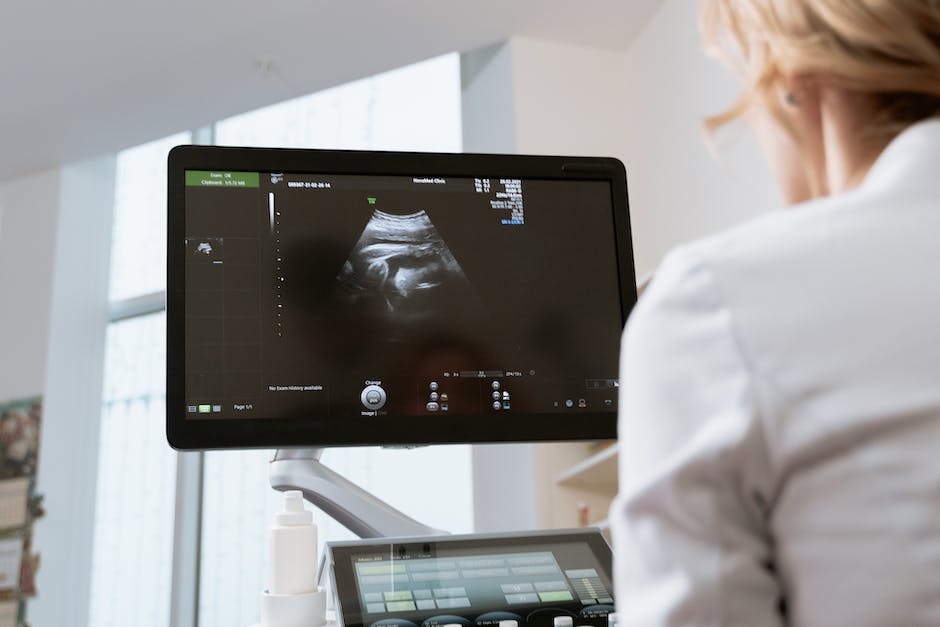
Massage Techniques for Period Pain
Understanding Belly Massage
Period cramps are often caused by the tightening of uterine muscles, and belly massage can offer substantial relief by increasing blood flow and reducing muscle tension. Studies have shown that belly massage can significantly alleviate menstrual pain, and it’s a simple technique that can be performed at home.
Circular Strokes
The first technique is circular strokes. It’s a basic and simple type of massage that is very effective for period pain. Start by rubbing your hands together to warm them up. Then, place them over your navel. Apply light pressure and begin to move your hands in small circles, slowly widening the circles as you go. Continue this for a few minutes, then gradually restrict the circles back to the center. Repeat the process until you feel relief.
Light Kneading
The next method is light kneading. This approach involves gently pinching and squeezing your skin and muscles, like kneading dough, to relax your abdominal muscles and provide relief. Spread your fingers wide and use your thumb and fingertips to gently grasp your skin, then release. Work in a circular pattern starting from your navel and moving outward across your belly.
Warmth Application
Lastly, applying warmth is an effective way to relax your muscles and soothe period cramps. Warmth increases blood flow, which in turn helps relax your uterine muscles. You can use a hot water bottle, heating pad, or even take a warm bath or shower. Lie down comfortably and place the source of warmth on your lower abdomen. Take slow, deep breaths and let the heat ease your pain.
Correct Hand Positions
In all of these massage techniques, it’s crucial to use the correct hand positions to avoid causing further discomfort. Start by relaxing your hands and fingers. When making circular strokes or kneading, amazing results can be obtained by using your entire hand, not just your fingertips. While applying warmth, be sure to shield your skin with some fabric, like a towel, to prevent burns.
Pressure Points for Period Pain
A common pressure point for period pain is the Sea of Energy point, located two finger widths below your navel. Applying mild, consistent pressure to this spot can help reduce pain. Another is the Grandfather Grandson point, found on the arch of your foot, in line with your big toe. Massaging these pressure points can promote pain relief and relaxation. It’s important to remember that everyone’s body is unique, and responses to pressure point stimulation can vary.
To efficiently learn and master these techniques, consider using illustrated guides or watching video demonstrations. They will provide a clear visual of the hand positions, pressure point locations and techniques to use. Regular practice is key to perfecting these belly massage techniques for period pain relief.
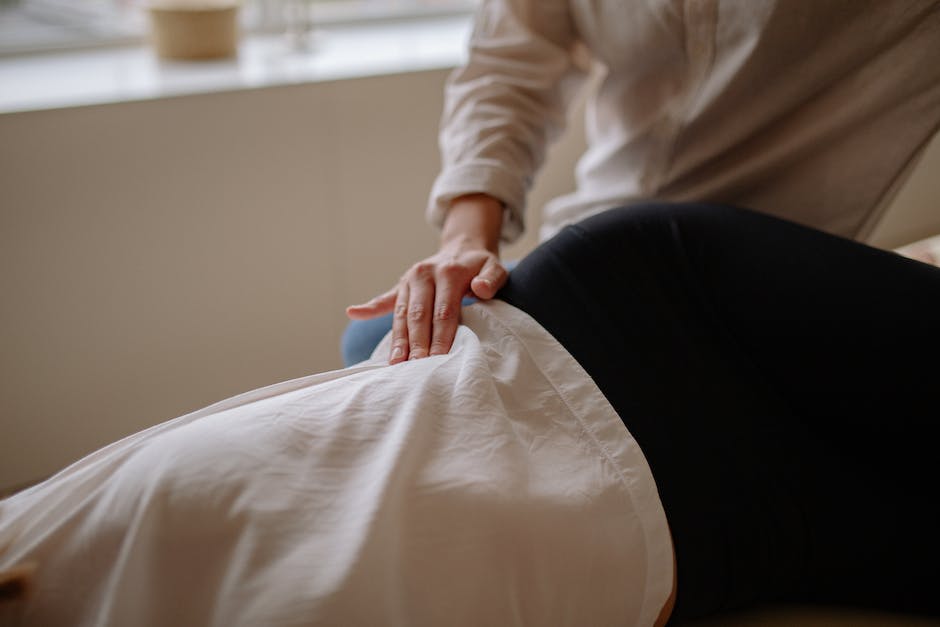
Precautions and Tips
Precautions When Performing a Belly Massage for Period Pain
Before you start, take the time to ensure that you are comfortable. Use cushions or blankets to support yourself and ensure you are in a position that will not strain your body. Wash your hands thoroughly before starting the massage to avoid introducing any bacteria to your skin.
Avoid applying direct pressure to the center of your abdomen, where the uterus and bladder are located. This area can be quite sensitive, especially during menstruation, and firm pressure might result in increased pain or discomfort.
Identifying Helpful vs Harmful Techniques
The idea of a belly massage is to ease the pain, not to add more. Therefore, it is crucial to listen to your body’s responses. If a particular pressure point or technique causes increased discomfort or sharp pain, it’s best to stop and move to a different area. However, some pressure points may cause a slight discomfort at first but ease off once it’s been massaged, indicating that the technique is working.
Take it slow. Don’t rush the process; instead, give your body time to respond to the applied pressure. A slow and rhythmic hand movement is often more beneficial than a quick and hurried one.
Combining Lifestyle Changes with Belly Massage
While a belly massage can greatly aid in reducing period pain, integrating some lifestyle changes can also make a significant difference.
Regular exercise, especially yoga, can help with menstrual discomfort. Gentle stretching and relaxation techniques, particularly those targeting the pelvic area and lower back, can help reduce tension and alleviate menstrual cramp.
Stay hydrated and follow a balanced diet rich in fruits, vegetables, and whole grains. Some women find that certain foods can augment their period pain, so it’s best to observe what foods work for you.
Rest is vital – make sure you are getting enough sleep. Quality sleep can aid in pain management, helping your body and mind to relax and recharge.
Lastly, always remember to consult a healthcare professional if your period pain is severe or doesn’t improve with these steps. Possible underlying conditions might need medical attention.
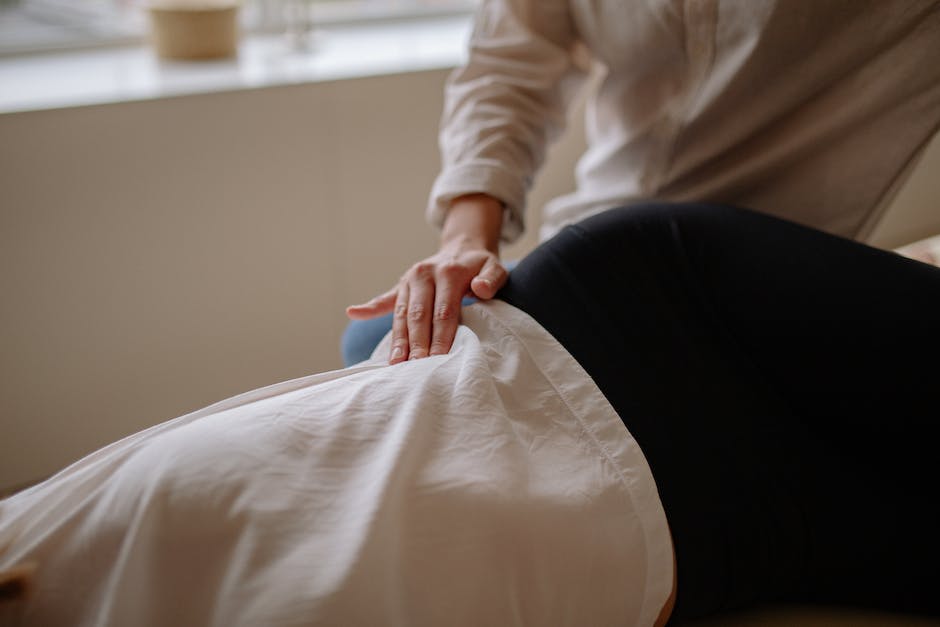
Armed with an understanding of female reproductive anatomy and how it plays a role in menstrual pain, belly massage emerges as a promising non-pharmacological method to manage period discomfort. The particular techniques discussed, including circular strokes, light kneading, and warmth application, when performed correctly, can offer significant relief. However, it’s essential to bear in mind the need for cautious practice and vigilance to potential harm. In addition to these techniques, incorporating lifestyle changes such as a balanced diet, regular exercise, and stress management strategies can further facilitate wellbeing during menstruation, reducing the unpleasantness often associated with this natural bodily process. Therefore, it becomes evident that a holistic approach can potentially transform the menstrual experience from one of dread into a more manageable, and perhaps even empowering, part of life.
